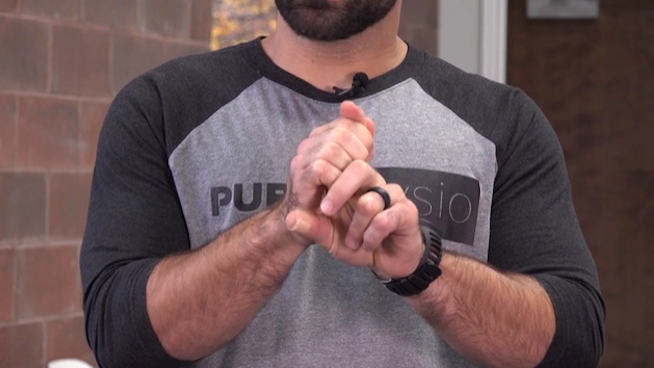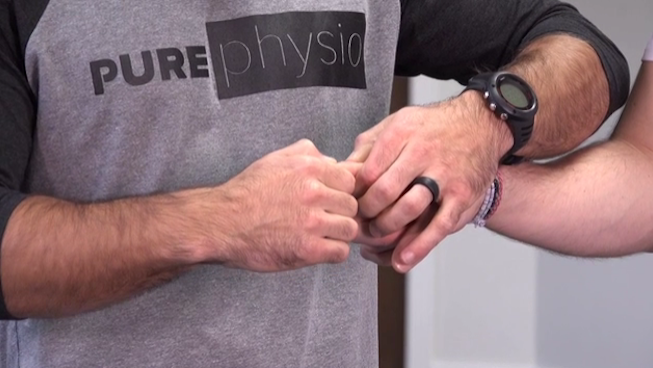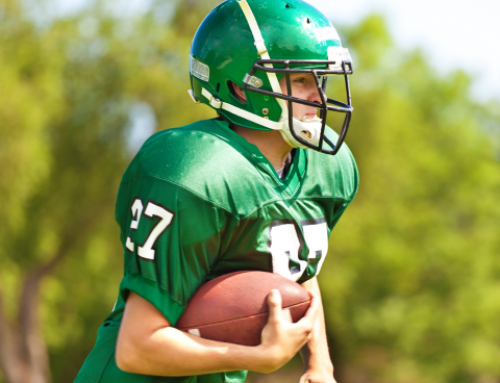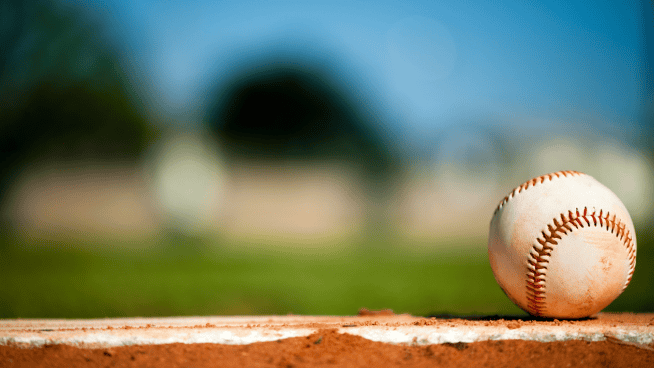How to Fix a Jammed Finger
A jammed finger is a common injury that frequently affects athletes who regularly catch balls, but it can happen to anyone—even in the comfort of your home.
The injury occurs when a ball—or another object—strikes the tip of one of your fingers, causing some damage to the ligaments in the joints of your finger, or more simply, your knuckles. The joint typically swells up a bit and becomes difficult to move. It’s not overly painful and you can likely play through it, but there’s no doubt the injury is uncomfortable and can negatively impact your skills depending on your sport and position.
Immediately after jamming your finger, it’s best to ice and rest the injury to help alleviate some of the swelling and speed up the recovery process. Assuming it’s not too painful, you should begin to mobilize the joint to prevent it from becoming too stiff.
Here are two simple strategies provided by Dr. Matt Stevens, physical therapist and owner of Pure Physio (Strongsville, Ohio), to fix a jammed finger.
Jammed Finger Exercises
Activate Range of Motion
When your finger swells, it gets stiff and you won’t want to move it as much. The goal here is to simply get your injured finger moving again and restore some range of motion.
How to: Grab your finger just under the injured knuckle. Now bend and straighten that knuckle repeatedly, moving through as much of a range of motion as is comfortable. It’s OK to feel mild discomfort or pain, but stop if it’s too intense.
Partner Oscillations
If the strategy above doesn’t work, try this partner method, which is simply a more intense active range of motion exercise.
How to: Have a partner grab your finger just under the injured knuckle and above the injured knuckle with their opposite hand. Have them slightly pull the top of the finger and then slowly shift it up and down. If this is comfortable, have them bend and straighten your finger.
One word of caution. If you experience significant swelling, bruising, pain or a deformity, then please see your doctor as you may have sustained an injury that’s more severe than a jammed finger.
READ MORE:
RECOMMENDED FOR YOU
MOST POPULAR
How to Fix a Jammed Finger
A jammed finger is a common injury that frequently affects athletes who regularly catch balls, but it can happen to anyone—even in the comfort of your home.
The injury occurs when a ball—or another object—strikes the tip of one of your fingers, causing some damage to the ligaments in the joints of your finger, or more simply, your knuckles. The joint typically swells up a bit and becomes difficult to move. It’s not overly painful and you can likely play through it, but there’s no doubt the injury is uncomfortable and can negatively impact your skills depending on your sport and position.
Immediately after jamming your finger, it’s best to ice and rest the injury to help alleviate some of the swelling and speed up the recovery process. Assuming it’s not too painful, you should begin to mobilize the joint to prevent it from becoming too stiff.
Here are two simple strategies provided by Dr. Matt Stevens, physical therapist and owner of Pure Physio (Strongsville, Ohio), to fix a jammed finger.
Jammed Finger Exercises
Activate Range of Motion
When your finger swells, it gets stiff and you won’t want to move it as much. The goal here is to simply get your injured finger moving again and restore some range of motion.
How to: Grab your finger just under the injured knuckle. Now bend and straighten that knuckle repeatedly, moving through as much of a range of motion as is comfortable. It’s OK to feel mild discomfort or pain, but stop if it’s too intense.
Partner Oscillations
If the strategy above doesn’t work, try this partner method, which is simply a more intense active range of motion exercise.
How to: Have a partner grab your finger just under the injured knuckle and above the injured knuckle with their opposite hand. Have them slightly pull the top of the finger and then slowly shift it up and down. If this is comfortable, have them bend and straighten your finger.
One word of caution. If you experience significant swelling, bruising, pain or a deformity, then please see your doctor as you may have sustained an injury that’s more severe than a jammed finger.
READ MORE:












